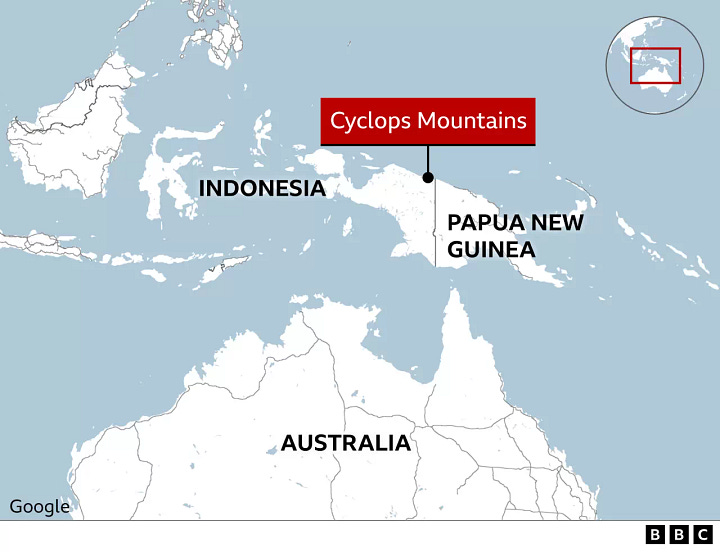The Weekly Anthropocene, November 15 2023
First Nations tracking salmon with AI, China's emissions could peak this year, Australia and Tuvalu sign a climate refuge treaty, the rediscovery of the Attenborough's long-beaked echidna, and more!
United States
The state legislature of Michigan has passed a set of excellent clean energy and climate action bills (thanks to Democrats gaining control in the 2022 midterms!) that are now essentially certain to be signed into law by Democratic Governor Gretchen Whitmer. They include a notably ambitious clean power mandate of reaching 80% carbon-free electricity (renewables plus nuclear, essentially1) by 2035 and 100% carbon-free electricity by 2040, as well as a bill creating a state community and worker economic transition office to ease the switch away from fossil fuels, a bill requiring utilities to adopt energy efficiency measures, and a bill to grant the Michigan Public Service Commission sole permitting authority for all solar and battery projects over 50 megawatts and all wind projects over 100 megawatts. This permitting one is a lot more important than it sounds; several states have passed 100% clean electricity targets (see map), but Michigan is only the second state in the country (after Illinois) to pass a speed-up-permitting bill like this, short-circuiting the senseless town-level NIMBYism that has been an increasing obstacle to decarbonization. This is great news, and a model for the nation and the world!
The 2023 “off-off-year” United States elections went well for Democrats, a cheering sign. Kentucky, a state that generally votes strongly Republican in presidential elections, reelected Democratic Governor Andy Beshear, defeating a strongly anti-clean energy Republican challenger in the wake of booming Inflation Reduction Act-driven battery manufacturing investments in the Bluegrass State. Democrats took control of the state legislature in Virginia (effectively stopping Republican Governor Youngkin’s anti-renewables agenda), and expanded their state legislature control in New Jersey, a key site for offshore wind development.
Texas has overtaken California as the U.S. state with the most installed solar power! As of end-September 2023, Texas’ state grid2 had 18,364 megawatts (over 18 gigawatts)3 of solar power capacity, compared to 17,277 in California. And Texas, unlike Michigan and many other Democratic-led states, has little to no extra support for clean energy from the Republican-dominated state government (quite the reverse, in fact4). As renowned Texan climate scientist Dr. Katharine Hayhoe wrote recently on Substack, energy storage is also taking off in the Lone Star State. Great news!
This is a harbinger of the future of renewable energy: even in jurisdictions with nil or negative government intervention, the economics are just so good now that huge amounts are going to be built! (Of course, Texas renewables projects already benefit hugely from federal Inflation Reduction Act tax credits, but the point remains that it’s new and interesting to see renewables surging ahead even while state leadership is actively hostile). This also underscores the changing dynamics of what it takes to move clean energy forward; now that the economics are in favor of decarbonization, it’s more important than ever to make it easy to build things!
The Biden Administration has allocated $16.4 billion to 25 major passenger rail improvement projects in the Northeast rail corridor, including upgrading 12 aging bridges and 13 other projects (including some that should substantially reduce delays). The United States has long underinvested in rail infrastructure-this is an important step in the right direction!
NASA is using high-altitude sensor-laden aircraft to search for critical mineral deposits in the American Southwest.
The U.S. FDA has approved the world’s first vaccine for chikungunya, a mosquito-borne disease that has been spreading widely in recent years. Great news!
Near the Port of Baltimore in Maryland lies the site of Bethlehem Steel, a pioneering steel factory active from 1887 through 2012 that was at one point the largest in the world. Now, federal investment is spurring its transformation into Sparrows Point Steel, a new offshore wind turbine factory set to serve the rapidly growing sector up and down the U.S. East Coast. The former world’s largest steel plant becoming an offshore wind hub is an excellent example of the great American reindustrialization of the clean energy-driven Biden Boom!
“Through both the Infrastructure Investment and Jobs Act and the Inflation Reduction Act, we’re bringing manufacturing jobs back to the U.S. and back to Maryland, and this investment will help make Baltimore a competitive manufacturing hub for offshore wind and a premier destination for clean energy growth.”
-Statement from six Maryland lawmakers
Canada

First Nations-led fisheries authorities in British Columbia have partnered with marine scientists to develop and train a world-first deep learning system that automatically counts and identifies 12 fish species (including all five Pacific salmon species) from video footage. (Here’s the study detailing their work). The Heiltsuk Nation has already successfully tested a pilot version of the system at their salmon weir on the Koeye River, and the researchers plan to be working with 10 different First Nations to monitor salmon in real time throughout the migration season by 2025. Amazing work!
This is one of many fascinating examples worldwide of automating ecological monitoring with AI5. The Weekly Anthropocene has already discussed underwater microphones tracking river dolphins in Brazil and many more; similar ongoing efforts that may or may not pan out include building robots to automate coral restoration planting off Australia and an AI-driven “bear-dar” polar bear early warning system in Churchill, Manitoba. One could hope that we’re seeing the glimmering beginnings of a true “Naturenet,” global 24/7 monitoring of Earth’s ecosystems’ key vital signs!
China

A landmark new analysis has found that China’s carbon dioxide emissions will likely peak this year and start declining in 2024, thanks to an unprecedentedly large and rapid clean energy buildout. (It’s hard to wrap one’s head around just how much clean energy is being built in China these days; for comparison, the installations of new solar, wind, nuclear, and hydro power in China this year alone should generate enough electricity to supply all of France). Yes, despite the concurrent buildout of coal plants: clean energy is being built even faster, and is likely to meet all new electricity demand and start cutting into fossil fuel’s share of existing demand in 2024. This is…a really big deal! Great news.
Nigeria
In May 2023, newly elected Nigerian President Bola Tinubu announced the end of the country’s longstanding fuel subsidy, which had been extremely costly, contributed to Nigeria’s endemic oil-related corruption, and incentivized widespread use of low-quality highly polluting fuel-burning generators for electricity. BloombergNEF, an energy research service, forecasts that Nigerians are now likely to turn to solar power en masse to provide electricity. This could help speed the launch of plentiful decarbonized electricity in Africa’s most populous country!
Kenya
Rapidly-growing Kenya held a public tree-planting holiday on Monday, November 13. The government urged Kenyans to use the time to plant 100 million trees across the country and hope to continue the endeavor to plant 500 million by the end of the rainy season in December, working towards the broader goals of planting 10 billion trees by 2032 and upping Kenya’s forest cover from 7% to 10%. This wasn’t a haphazard one-off, either: Kenyan President William Ruto and cabinet ministers dispersed across the country to lead tree-planting events, 150 million seedlings were made available in public nurseries, and the Jaza Miti app will allow Kenyans to log their tree-planting activities and select suitable tree species for their planting sites.
Tuvalu & Australia


In a landmark moment for climate-related geopolitics, Australia signed on November 9, 2023 an unprecedented new “climate refuge pact” bilaterial treaty with the tiny Pacific island nation of Tuvalu, establishing the “Falepili Union6.” NASA has previously found that most of Tuvalu’s land area will be below average high tide by 2050, and the Falepili Union provides a long-sought lifeline to ensure the survival of the Tuvaluan people and culture.
Under the terms of the wide-ranging Falepili Union treaty, Australia will allow 280 new Tuvaluans every year to move to Australia, with full privileges to live, work, and study. (For context, there are only about 11,200 people in Tuvalu, so in theory this would allow the entire population to move to Australia by the mid-2060s). But the treaty also explicitly states7 that Tuvalu is not abandoning its traditional territory. Australia will expand its participation in (and provide additional funding for) a land reclamation project with the goal of increasing Funafuti’s land area by 6%, and pledges in the treaty to assist Tuvalu in the event of a natural disaster, public health emergency, or military threat.
In sum, Australia has essentially adopted Tuvalu, pledging to defend its territory and provide a home for its people. This could be a very valuable model for helping other small island developing states survive the rising seas of Anthropocene Earth!
New Guinea


Attenborough’s long-beaked echidna (Zaglossus attenboroughi, pictured above), one of only four living species of echidna, was long feared extinct, with the last formally described sighting taking place in 1961. Now, a joint Oxford/Indonesian expedition to the remote Cyclops Mountains on the vast island of New Guinea8 has rediscovered the elusive echidna, spotted in camera trap footage retrieved on the very last day. The expedition also discovered a treasure trove of new-to-science biological wealth, including a highly unusual terrestrial tree-dwelling species of shrimp, dozens of new insect species, two new frog species and a hitherto unknown cave system home to blind spiders. This is an awesome new example of the incredible natural richness of our planet!
Michigan’s bill also allows natural gas plants with carbon capture to count as carbon-free electricity, a political concession to get the bills passed that probably won’t end up meaning much as carbon capture for power plants has historically been expensive and unworkable.
And the Texas Interconnection, the state grid managed by ERCOT, doesn’t even cover all of the state of Texas, with some border areas (for example, El Paso) linked to other regional grids. So this is even more impressive than it looks: just most of Texas now has more solar than all of California!
Comma and decimal point conventions change between countries, such that “two and a half” is written as 2.5 in some and 2,5 in others. To be clear, a gigawatt equals one thousand megawatts, and Texas at the end of September 2023 had over eighteen thousand megawatts of solar power capacity (i.e. over eighteen gigawatts).
The story here is an interesting one. Wildly extremist anti-renewables bills only narrowly failed to pass the Texas state legislature in 2023, with disaster avoided mostly thanks to business interests, including dozens of Chambers of Commerce, strongly lobbying to protect clean energy. The politics of decarbonization have changed a lot in recent years!
This writer has seen some debate over whether deep learning counts as “real” AI; ultimately “artificial intelligence” is an inherently subjective term. As one quote goes, “As soon as it works, no one calls it AI any more.”
The two Commonwealth realms have deep preexisting cultural ties, including sharing King Charles III as constitutional monarch. “Falepili” means “neighbor” in Tuvaluan.
The Cyclops Mountains are in the Indonesian province of Papua, which splits the island of New Guinea with the nation of Papua New Guinea.






That blurb on China is particularly eye-popping - really exciting stuff there. Thanks for sharing.
This is positive news. However, there is a major story in Barron’s entitled “The Clean Energy Crash”, highlighting the collapse in renewable energy stock prices and severe problems in the offshore wind industry, with large scale project abandonment by the industry due to poor economic returns and cost overruns. Mandating renewable energy requirements is not the same as actually producing the necessary renewable energy to meet the targets.